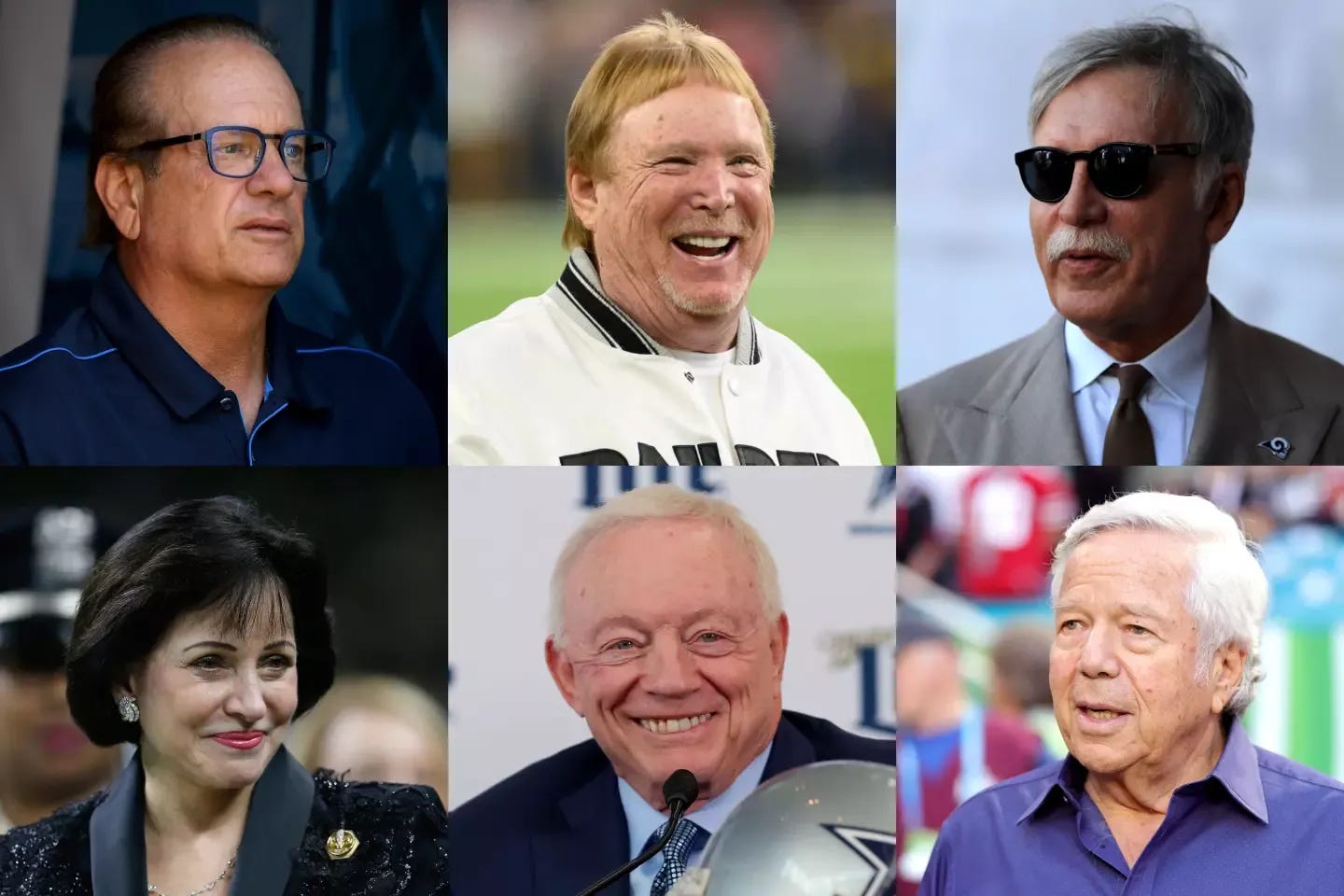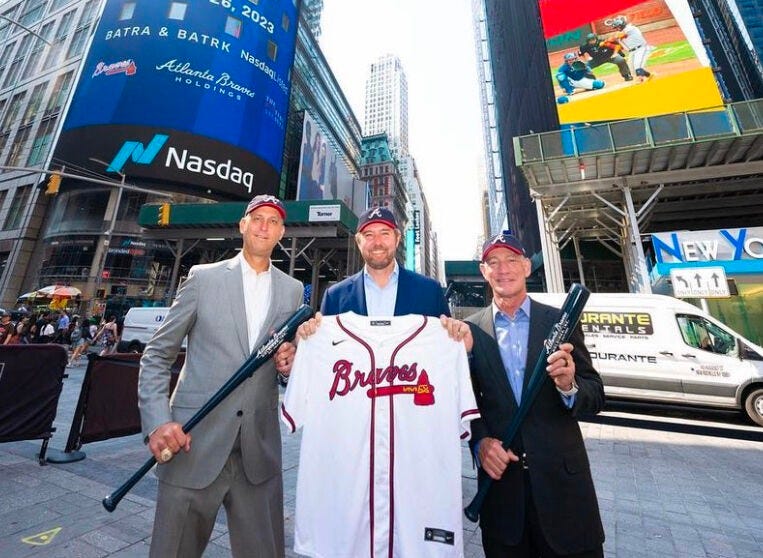One way to find inspiration: Read the pros
Op-ed pages that don’t take contributed articles usually have great writing.
Thanks for reading Pitches Get Stitches. I’m Jake. I’m a fractional editor-in-chief, which means I work with companies to develop their executives into thought leaders. I previously built and edited the opinion section at Fortune.
In this newsletter, I evaluate thought leadership, op-eds and media pitches from the perspective of an opinion editor. I highlight what works and what doesn’t, based on what I’ve learned over my career fielding pitches and helping clients write their own.
I would love if you submitted a pitch for me to review. It can be something you’re actively working on or hypothetical. And it can be a short email or a full draft.
If you have a pitch, reply to this email or send it to jake@getopinioned.com. If I select it, I’ll omit any identifying information and evaluate it in this newsletter.
I realized the other day that my thought leadership breakdowns have left out an important group.
There are many professional journalists who regularly write for opinion pages, both in outlets that take contributed articles and those that don’t.
Obviously, it’s easier to spot these articles in commentary sections that only publish staff writers. Two great places to look, especially for those in the business/finance/leadership space, are Bloomberg and Reuters.
The quality of these op-ed pages demonstrates how good opinion journalism can be when you approach it from an editorial perspective.
The articles in Bloomberg and Reuters’ opinion verticals come about when writers and editors collaboratively decide which ideas are worth pursuing. Keep that in mind when you consider how many contributed articles originate: when a company tells their PR firm they want to do an op-ed for executive visibility.
No wonder the end result is so different.
Try comparing Bloomberg and Reuters’ opinion pages to other business/finance/leadership-focused opinion sections that only rely on contributors. You’ll likely notice a huge difference in the quality of the pieces they publish (excepting the Wall Street Journal and Financial Times, which have such elite reputations that they attract the best contributed articles).
It’s hard to envision most active CEOs penning the op-ed featured in today’s newsletter, by Bloomberg Opinion’s Adam Minter. They’re usually too risk-averse to make such a bold argument.
That’s a shame—because the bolder they are, the better chance they’ll get published in those top outlets.
Dear NFL, Let Fans Invest in Teams Too
The league should stop turning its nose up at the idea — especially after it voted to allow private equity into the game.
Adam Minter is a Bloomberg Opinion columnist covering the business of sports. He is the author, most recently, of “Secondhand: Travels in the New Global Garage Sale."
I’ve heard this idea a billion times: One of the best ways to come up with a quality topic is to look at the news and see what people are interested in. Then, square that with your expertise and write about it.
This can work if you already have a strong handle on how to write thought leadership. But if you’re still getting your sea legs, it’s a bad way to start.
You’ll end up chasing the news so you can “ride the wave,” but do so at the expense of cultivating your own identity as a thought leader.
No matter how “on the news” you are, no one is going to publish you if you don’t already have a well-developed thought leadership platform.
This op-ed is “on the news,” and it’s a great piece. But it only works because the author is an established writer at Bloomberg who’s spent ample time developing his expertise in the business of sports. That makes readers trust what he writes.
I’m not trying to dissuade anyone from writing opinion pieces related to big news stories. I’m saying that you need to feel comfortable in your own skin before doing so. Then, it goes from a desperate strategy to an effective one.
National Football League owners are burdened with a pricey problem. The cost of owning a team has become so expensive — topping $6 billion last year — that there just aren’t many billionaires left who can buy one. So on Tuesday, after years of deliberation, the NFL relaxed its strict ownership rules to allow private equity to buy stakes in teams. The hope is that the deeper pool of money will make dealmaking easier and more lucrative for NFL owners.
In return, private equity gets the right to call itself an owner, too. But that’s about it. Firms won’t get a role in team decision-making and won’t be able to sell a team stake for six years, minimum.
That’s a great deal for NFL owners, but the league shouldn’t stop with private equity. If it is serious about seeking deep pools of few-strings-attached capital, it should allow fans to invest, too. The benefits will transcend the money and position the league for future growth and stability.
This is an excellent introduction to the article. Seriously, if you're unsure of how to write an intro, read this.
This tramples over the poor advice (again, advice that is unfortunately widespread) that you need to immediately jump into your thesis statement.
Yes, it’s true that you can’t take forever setting the table. But your success really depends on how big your setup is and, perhaps even more importantly, how interesting it is. Minter packs in a lot of information here, but all of it is relevant. And the tone is immediate: By line two, we know what has just taken place and why it matters.
It’s not a new idea. For example, in Spain, four teams in the country’s top soccer division (La Liga) are fan-owned, including Real Madrid. Major League Baseball fans can buy shares in Atlanta Braves Holdings, Inc. on the NASDAQ (Warren Buffett’s Berkshire Hathaway bought $8 million worth in 2023). And in 1923, the NFL’s Green Bay Packers, facing financial ruin, reorganized as a publicly-owned non-profit and sold 1,109 shares for $5 each.
From a financial standpoint, it was a lousy deal for investors. Packers stock doesn’t pay dividends, it can’t be sold and there isn’t even a market price (the last offering, held in 2002, sold shares for $300 each, plus a $35 handling fee). Instead, diehards get a frameable certificate, the right to vote on the Board of Directors at an annual meeting and access to shareholder-only merchandise (like shot glasses labeled “Shareholder”).
Nonetheless, there are currently 538,967 shareholders, and they own around 5.2 million shares.
Why would anyone willingly lock up their money like this? Fandom offers an unrivaled sense of community and social identity, especially in polarized times. You don’t just watch the games; you’re a cheesehead, the nom de guerre of Packers fans everywhere. Some people buy $300 jerseys to express membership. And some purchase shares because nothing says “belonging” quite like “team owner.”
There’s more context here. In some instances, one could argue that so much context at the top of a piece risks losing the reader. But again, all of this context is relevant to the primary argument, which is that fans should be allowed to invest the same as wealthy individuals and private equity. And there are a lot of interesting little details Minter shares, particularly about Packer fan-investors, that keep the narrative interesting.
Moreover, it’s essential for Minter to take time explaining fan ownership in other contexts, such as Europe, so that readers know this idea isn’t completely pie-in-the-sky. It can be tempting when you have an open platform like an op-ed to simply state what you think should happen, without considering whether it's realistic. There's a misconception that you can just pontificate about anything because it's "your opinion."
If you extend that logic to the extreme, you can see why it doesn't make sense. Writing an op-ed about why the NFL should not only allow fans to invest in teams, but also force all current owners to sell their teams to fans, would sound like fantasy, and no respected outlet would publish it.
You have to find the sweet spot between plausibility and aspiration.
These benefits are all known to the NFL. Yet the league prefers to remain the domain of a small, exclusive group of owners who can still deliberate among themselves over key decisions. Thousands of new shareholders, even if they only own a minority share of a team’s equity, challenge that sense of exclusivity and — ultimately — can serve as a force for accountability.
For example, the NFL likes team finances to remain private for competitive and public relations purposes. After all, when a team goes begging for public stadium subsidies, it doesn’t help the cause to have its profits revealed. The Packers, as a publicly-owned team, are the sole franchise currently obligated to disclose financial details, and the NFL wants to keep it that way.
Minter is wise to spend the next two paragraphs explaining why the NFL would likely not be receptive to this idea.
Up until now, he’s only been explaining the benefits of having a wider pool of investors. Yet the reader may be wondering at this point: Why would the NFL even consider this proposal?

It’s important to stay aligned with your reader for the duration of the piece, not just when you’re trying to grab their attention at the beginning. If you anticipate they might have questions, try to answer them proactively. That’s what Minter is doing here.
And his explanation is convincing: The NFL wants its owners to have airtight control over their teams’ decisions and transparency.
So, beginning in 1960, the NFL implemented a series of rule changes that — excepting the Packers — limit the number of shareholders and prohibit non-profit teams, among other restrictions. Occasionally those rules have been challenged, but generally, they’ve remained in place until last week’s change to allow private equity investments. During the meeting (which I attended in Eagan, Minnesota) to vote on the decision, the league and owners repeatedly made clear that teams wouldn’t be ceding any control to their new silent partners.
Private equity will bring cash and perhaps a few new notables to the luxury boxes at NFL stadiums. But for all its advantages, the deal doesn’t promise the additional, tangible benefits that make public investments in teams valuable. In Green Bay, for example, an invested fan is a loyal fan, likely to buy even more merchandise and tickets, post about the Packers on social media and volunteer to help shovel out home field after a storm. It’s the kind of fan engagement teams can’t buy; ironically, they can only sell it.
For now, absent an unlikely NFL rule change, it’s all but impossible for other football franchises to enjoy those benefits.
It’s helpful to explain the advantages of public ownership in more detail, such as the examples of fans buying more merchandise and shoveling the field after a snowstorm. This gives the reader a tangible sense of what those benefits are.
I would have liked to have seen a more thorough evaluation of whether private equity will bring any benefits to teams. Sure, it’s true that private equity owners won’t exhibit the kind of fan loyalty he describes. But could there be other less tangible benefits that are also important. All he says is that private equity will bring cash and notables, but this feels like a surface treatment of what they might actually offer as owners.
But that doesn’t mean that other groups aren’t trying. On September 23, Erie County, New York, will provide a one-day exclusive opportunity for Buffalo Bills fans to buy the municipal bonds (in $5,000 increments) needed to finance a new, $1.7 billion Bills stadium. County comptroller Kevin Hardwick isn’t exactly touting it as a sound financial investment. “Bills fans will be able to point to the stadium and tell their grandchildren that they helped the county finance its share of that,” he recently told Bloomberg.
The Bills will benefit from those bond sales. But the NFL, for now, isn’t prepared to let its teams profit from more direct fan investments, such as stock sales.
By keeping that additional capital at bay, it’s depriving its teams of the kind of long-term, deep fan engagement that the league will need in an era when there are more competing forms of entertainment than ever before.
The careful, deliberate process by which the NFL crafted rules for private equity proves that it can maintain control of the playing field, even against PE. At this point, it should feel confident enough to give fans a chance to get into the game, too.
The sentence that makes up the penultimate paragraph is excellent. “In an era when there are more competing forms of entertainment than ever before” positions this story in a broader context, and Minter does it in only a few words.
Op-ed writers often aspire to peg their article to a broader narrative, and this is one of the best ways to do so—at the end of the piece, after the more specific, focused argument has already been established.
I also like how he ends by comparing the NFL’s rules for private equity to how the league might hypothetically craft rules for fan owners. It implies that this type of change is not only possible, but something the NFL has already demonstrated it can implement.








